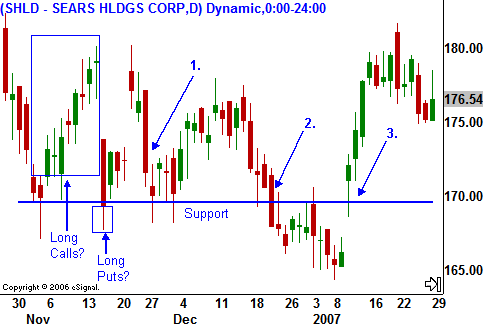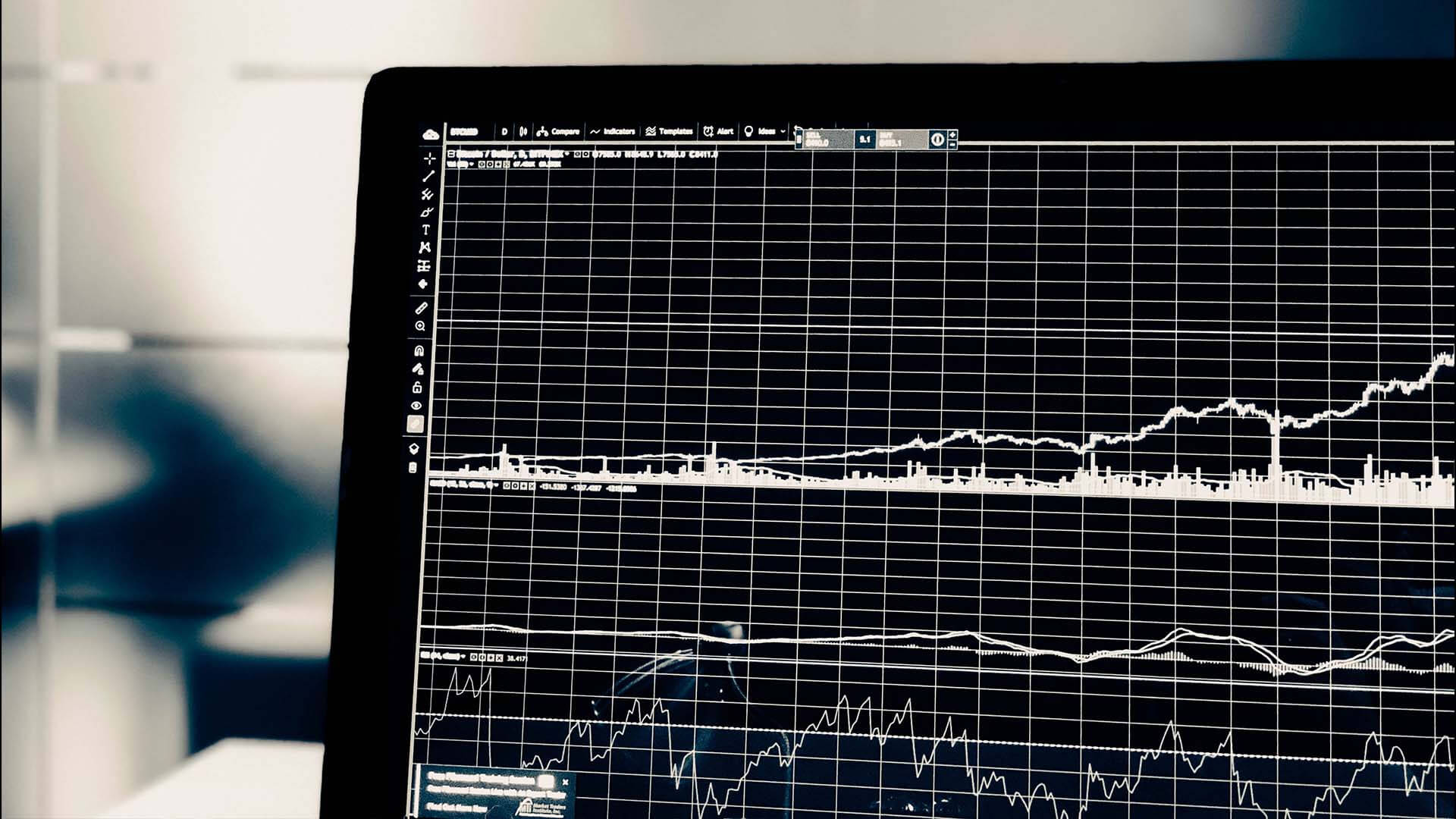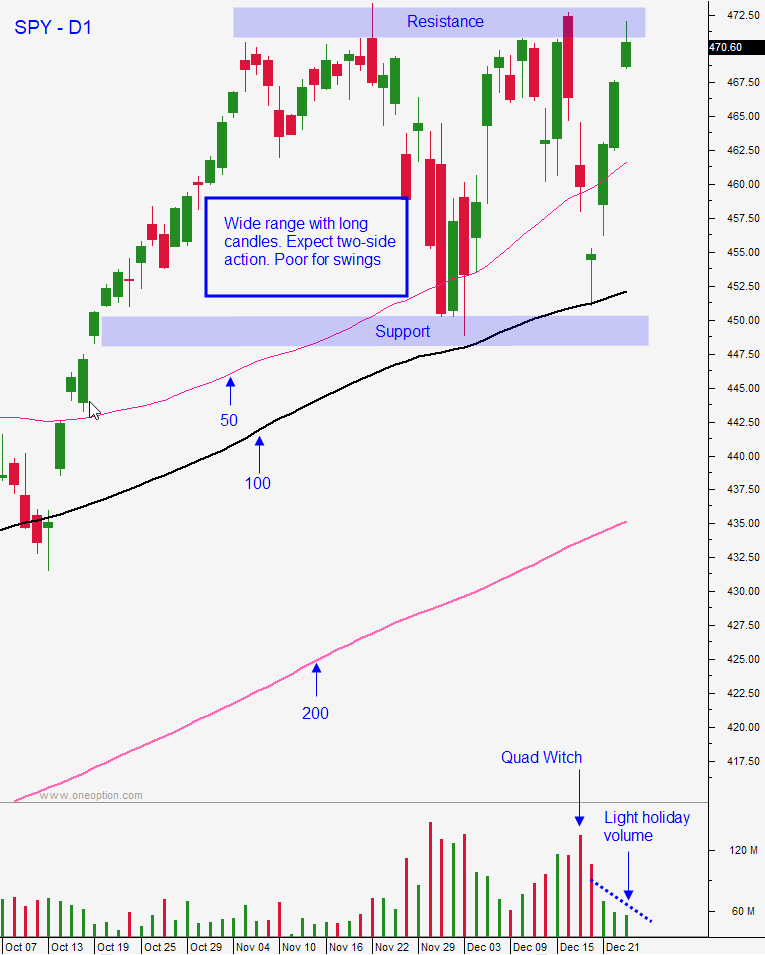Question
Please indulge a beginner. I have limited myself to buying calls and puts until I got more familiar with option strategies.
As February expiration approached I found myself hopelessly out-of-the-money (OTM) on 4 SHLD Feb170 puts. I’d bought them four months earlier when they were in-the-money (ITM). I had made money on some SHLD calls and I felt confident that the stock would retrace.
Feb arrived and the stock had made its way up over $180. I had been watching it and it was not unusual to see it up $3.00 or $4.00 one day then down $2.00 or $3.00 the next. But, alas, I waited too long and there was no way I was going to see any profit and it was now too late to bail out.
How does one get out of a position that has plenty of time but is far out of the money. I’m in trouble again and I wondered if I might SELL March 80 puts on JCP where I paid $5.50 for May 85 puts. The stock was down $4.00 today and I could have sold them for about $3.75. I would recoup some of my money, but they have plenty of time left on them. I doubt they will go far enough for me to sell-to-close at $5.50 or better.
I read about your strategy to sell OTM puts for a little each time and do it each month. If one had a few months and could capture around $100 each time I might get closer to recovering my initial investment. Does this make sense?
Answer
There are a number of pitfalls that you have fallen into. Let’s look at the chart and address them one-by-one.
.
.
.
.
1. Don’t flip-flop on a stock. Either you like it or you don’t. Trying to time zigs and zags is a losing proposition (for option trading) and you will continually be second guessing yourself. Once you made money on the calls, you should have moved on to another stock and waited for an opportunity to get long again. A material business event that changes the long-term profit outlook would be the only reason to change your bias.
2. I tried to find a time frame when you might have made money on the calls and bought the puts when they were in-the-money. If my assumption is right, it was in November (blue box). If that is where you bought the puts, you would want to see the stock stay below that support when it was violated. If you bought the puts when the stock traded below $170 and it gapped higher 2 days later, you could have stayed with the position knowing that you had time. Since the stock did not trade above $182 ( the high on the chart) you could have stayed with the position, waiting for a better exit price. The first two blue arrows show good exit points where you could have mitigated your losses. You stayed with the position and the stock broke $170 support. At this juncture, you were almost whole. I have found that when you have a bad trade right from the start and the market gives you a chance to scratch… take it. In any case, once the stock gapped back above $170, you had to get out. That old support level became resistance once the stock was below it and it should have been used for your stop loss.
3.This stock is not trending. It is chopping around in a random fashion. Hence, it is tough to predict. Trading is about forecasting the outcome and in this case, SHLD is a coin toss. Look for stocks that are trading in a very orderly manner.
4. Know in advance when you will get out of the trade. You should have specific price levels for both the target and stop. You should also identify the time horizon of the trade. If I am considering a 4-5 month trade, I will scale in and average my price. If the stock has not made a constructive move in 6 weeks, I may time-stop the trade. If I’m looking at a trade that will last 2-3 weeks, I’m anxious right out of the gate. With every hour that passes, the probablility that I’m wrong increases. I did the trade because I expected an immediate move. If it does not happen in a few days I may cut and run.
5. I don’t advocate trade repair. If you are wrong, get out, learn from your mistakes and move on. In the case of SHLD, you might have taken in some premium by creating a diagonal spread (sell front month out of the money options against the Feb put), but it would have only softened the blow. You would have lost less if you sold the Feb 170 puts at points 1,2 or 3. Spreads are great strategies, but they should be a part of the original game plan.
6.You are fighting the market. The trend has been up and you are buying puts. 75% of all stocks follow the market. If you are on the wrong side, you will lose money on 3 out of 4 trades. I have been losing money on puts during the last few months, but they have been a hedge for my larger position. In your case, I’m assuming these are your only trades. If they are not, hopefully your long call positions are offsetting the cost of your hedge. Before you can get long puts, this market will need to violate the major trendlines and horizontal support levels. It is very strong and you should not try to fight the trend. You should also take a look at the sector the stock belongs to. In the case of SHLD and JCP, they are retail stocks. Bring up a chart of the RTH – it is in a very strong trend. If you don’t like retail, wait for the market and the sector to roll over. In the meantime, find a sector you do like and get long.
In January when JCP brokeout above $82 resistance you should have been out of the trade. The market is giving you a chance to salvage the trade. I would not spread it, I would get out. The stock dropped to $82 support and bounced. At this stage I would set my stop at $84 and my target at $82.
Don’t feel bad about losing trades. They happen all the time. Just make sure you learn from your mistakes. You might consider reading my articles on how I trade options. The option strategy is a function of your opinion and confidence.
Thank you for a great, detailed question. I’m sure many other traders can relate.










